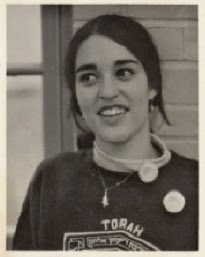 |
| NCSY National Convention 1967 That's me receiving Standards Award from Rabbi Stolper |
Rabbi Pinchas Stolper passed away a few weeks ago. If you google his name, you'll find information and a number of obituaries. None of them touches on the man who was instrumental in introducing me to "Torah True Judaism" as he had called it, during my years, mid-late 1960s, in NCSY National Conference of Synagogue Youth of the OU.
Immediately upon reading an email announcing his death and planned burial in Jerusalem, I contacted a few old friends from NCSY who live here in Israel not far from me. It was clear to me that I had to attend his funeral. According to Jewish Tradition, attending the funeral honors the dead person, and a shiva visit comforts the mourners. From the announcement there wouldn't even be a shiva in Israel.
Who, you may be wondering, was Rabbi Stolper? And how close was I to him? To be perfectly honest, I'd never been invited to his home and don't remember much in actual personal conversations, except when we were preparing posters for the NCSY marchers in the 1967 Salute to Israel Parade, just after the Six Days War. Rabbi Stolper couldn't contain his joy at Israel's miraculous victory. Rabbi Stolper did attend my wedding in 1970 where he spoke about Israeli History from the vantage point of a Betari, which we had in common. See my husband's blog post about Rabbi Stolper on the Betar blog.
In 1963 when I first got involved in NCSY I was just looking for friends. We had just moved to Great Neck a few months before, and I didn't fit in at all. My family ended up joining the Great Neck Synagogue, an Orthodox shul which may not have been a good fit religiously, but the price was right. Orthodox we weren't, nor Sabbath observers nor kosher.
Post World War Two most people considered Orthodox Jewry a dying breed. Considering the attraction of assimilation, poverty of the Great Depression, the trauma of Holocaust and the Jewish men who spent years away from home, the UOJCA, now called OU was desperate to keep Jewish teens Jewish. In the early 1950s they established NCSY. Member synagogues were encouraged to establish chapters and have activities for the youth. At that time there were few Jewish Day Schools, and not all the families could afford to send their children. Also, many member families were like mine, not at all religious. So NCSY had a dual aim:
- Keep the religious kids religious.
- Introduce Judaism to the non-observant and encourage them to follow the mitzvot
NCSY wasn't a Zionist youth movement. The term "aliyah" wasn't heard officially at all in the 1960s, though quite a few of my NCSY friends are living here in Israel now.
I'm not sure of the exact year, but sometime before my joining NCSY, Rabbi Pinchas Stolper had been appointed as National Director. He must have succeeded, because there was soon an Assistant National Director, Rabbi Chaim Wasserman.
Rabbi Stolper was a Zionist activist and a Betari. He had been Natziv, Head of North American Betar in the very early 1950s. He and his wife tried living in Israel but went back to New York. Rabbi Stolper built an amazing youth organization with chapters, grouped by regions, all over North America. He was an amazing administrator. NCSY events went like clockwork; each session started and ended on time. Chapters hosted regional Shabbat programs. For teens like myself, this was our first introduction to Shabbat. Even those from religious homes learned to enjoy Shabbat even more than they had. We sang Jewish tunes and danced and sang and danced. I'm convinced that Torah True Judaism entered my heart and mind via my dancing feet and loud singing, not that I understood the words of the songs. The educational "sessions" were led by some brilliant people. There are things I remember to this day.
At National Conventions, held in a large hotel, The Pine View, only Shabbat ended late. But that was the plan. Rabbi Stolper led the Havdala, and some of us girls were given lit candles to hold high. We were told that the higher the candle, the taller our future husband would be. Rabbi Stolper was most inspiring during Havdala.
The key to the success in reaching Jewish teens like myself was the tolerance of the staff of advisors. We were given time and acceptance while learning and experiencing Torah True Judaism. In those days, tzniyut modesty was rare, even religious women wore sleeveless and Orthodox synagogues hosted dances. Some OU member synagogues didn't have a mechitza separation and even had mixed seating. The OU was in a "war for Orthodox survival," and Rabbi Stolper was assigned to save Jewish youth. Yes, he and his staff worked hard stop the flood of assimilation, and they succeeded. The terms "outreach" and "baal teshuva movement" came afterwards. In the 1960s Yeshiva University Youth Bureau also had activities for teens on Shabbat and weeklong Seminars late summer and during winter vacation. It wasn't a national organization; I went to some of their events, too.
The Friday of Rabbi Stolper's funeral as one of my NCSY friends and I waited with his Israeli relatives for the bereaved children and body to arrive from the states, I wondered why there weren't mobs of people. From my perspective, Rabbi's Stolper's influence on North American Jewry was humongous, but it was half a century ago and more. Or can we say that his great success in strengthening Torah Judaism in teens has produced a generation that is incapable of fully comprehending what a miraculous success he had accomplished?
יהי זכרו ברוך
I wrote the following blog posts which also mention Rabbi Stolper and NCSY:









































